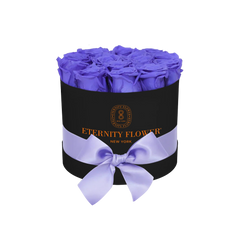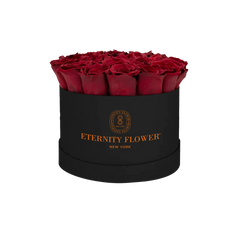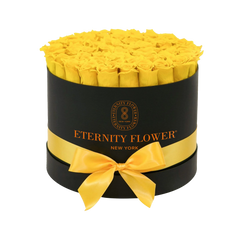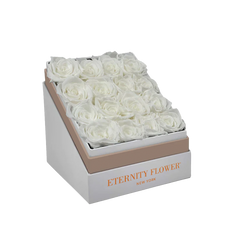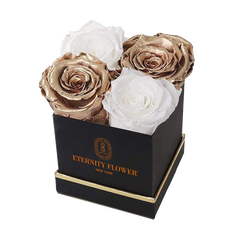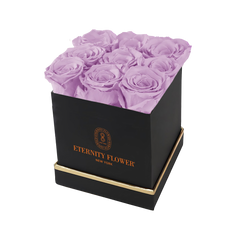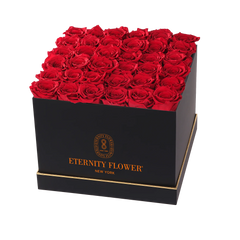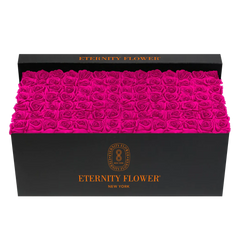Have you ever wondered why the color purple carries such profound meanings across different cultures, especially when it comes to flowers like carnations? Purple carnation flowers, with their vibrant hue and intricate symbolism, captivate flower enthusiasts worldwide.
What do these beautiful blooms truly signify, and how does their meaning vary from one culture to another? Today, We’ll be talking about purple carnations and learn how they are more than just a pretty flower thanks to their long past and wide range of cultural meanings.
What Do Carnation Flowers Symbolize?

Carnation flowers, scientifically known as Dianthus caryophyllus, have been cherished for centuries for their beauty and diverse symbolism. Traditionally, carnations represent love, fascination, and distinction. The meanings can vary significantly based on their color, making them a versatile choice for various occasions and messages.
The Meaning of Purple Carnation Flowers

Purple carnation flowers carry a unique and enchanting symbolism. Often associated with capriciousness and unpredictability, these blooms can also represent fascination and admiration. Their rich hue adds a touch of elegance and mystique, making them perfect for special occasions where you want to convey a sense of admiration or intrigue.
Read more: Azalea Flower Meaning: Symbolism and Significance
Historical Significance of Purple Carnations
Historically, purple carnations have been prized for their rarity and beauty. In ancient times, they were often used in ceremonial garlands and crowns. The color purple has long been associated with royalty and nobility, and purple carnations were frequently included in royal gardens and bouquets.
Purple Carnations in Floral Arrangements

Creating Stunning Bouquets
Purple carnations make a bold statement in any floral arrangement. Their vibrant color pairs beautifully with other flowers, such as white lilies, pink roses, or yellow tulips. Use them as focal points in mixed bouquets or create a monochromatic arrangement for a striking visual effect.
Decorating Events and Celebrations
Incorporate purple carnations into your event decor for a touch of sophistication and elegance. Whether for weddings, anniversaries, or birthday parties, these flowers can elevate the ambiance. Consider using them in centerpieces, floral arches, or as part of a larger installation.
Read more: Peek Behind Their Popularity: Common Flowers in Bouquets
Purple Carnations in Different Cultures
Purple carnations carry distinct meanings across various cultures, reflecting their unique historical and social contexts. Understanding these cultural differences enhances our appreciation of these beautiful flowers.
Western Traditions
In Western cultures, purple carnations are often associated with capriciousness and unpredictability. They can also symbolize admiration and fascination, making them popular in bouquets and floral arrangements meant to convey these sentiments.
Asian Traditions
In some Asian cultures, purple flowers, including carnations, are linked to royalty and nobility due to their rich, luxurious color. They are often used in ceremonies and special occasions to denote respect and high status.
Middle Eastern Traditions
In Middle Eastern cultures, purple carnations can symbolize dignity and pride. They are sometimes used in religious or spiritual contexts, reflecting the flower's deeper significance.
Funerary Uses
In certain cultures, purple carnations are used in funerary arrangements, symbolizing remembrance and mourning. This practice highlights the flower's versatility in conveying a range of emotions, from admiration to solemnity.
Contemporary Uses
Today, purple carnations are embraced worldwide for their aesthetic appeal and rich symbolism. Whether used in weddings, celebrations, or as gifts, they continue to captivate with their beauty and profound meanings.
Read more: Unveiling the Mystery of the Alluring Blue Carnation Flowers
Medicinal Uses of Purple Carnation Flowers

Purple carnations, like other varieties of carnations, have been used in traditional medicine for their various benefits. Here are some of the medicinal uses associated with these beautiful flowers:
Anti-inflammatory Properties
Carnations contain natural compounds that exhibit anti-inflammatory properties. These can be used to reduce inflammation and swelling when applied topically or consumed as part of herbal remedies.
Stress Relief and Relaxation
The essential oils derived from carnations, including purple carnations, are often used in aromatherapy to promote relaxation and alleviate stress. The soothing fragrance can help calm the mind and reduce anxiety.
Digestive Health
In some traditional practices, carnation petals are brewed into teas to aid in digestion. These teas can help soothe digestive issues and promote overall gut health.
Skin Care
Carnation extracts are sometimes used in skincare products for their moisturizing and anti-aging properties. They can help hydrate the skin and reduce the appearance of fine lines and wrinkles.
Wound Healing
Historically, carnation petals have been used to create poultices for treating minor wounds and cuts. Their natural antiseptic properties help prevent infections and promote faster healing.
How to Grow Purple Carnations

Growing your own purple carnations can be a rewarding experience, offering vibrant blooms and a touch of elegance to your garden. Here are some detailed steps to help you successfully grow these beautiful flowers:
Choosing the Right Location
Purple carnations thrive in well-drained soil and require plenty of sunlight. Select a spot in your garden that receives at least six hours of direct sunlight each day. Proper sunlight exposure ensures healthy growth and abundant flowering.
Soil Preparation
Prepare the soil by ensuring it is well-drained and rich in organic matter. You can improve soil drainage by adding sand or perlite, and enrich it with compost or well-rotted manure. This provides the essential nutrients and structure that carnations need.
Planting
Plant your purple carnations in early spring, after the danger of frost has passed. Space the plants about 12 to 18 inches apart to allow for adequate air circulation, which helps prevent fungal diseases. When planting, dig a hole slightly larger than the root ball, place the plant in the hole, and backfill with soil, pressing gently to eliminate air pockets.
Watering
Water your carnations regularly, keeping the soil evenly moist but not waterlogged. Overwatering can lead to root rot, so ensure the soil has proper drainage. During dry periods, increase the watering frequency, but always allow the top inch of soil to dry out between waterings.
Fertilizing
Feed your carnations with a balanced, water-soluble fertilizer every four to six weeks during the growing season. This promotes healthy growth and abundant blooms. Avoid high-nitrogen fertilizers, as they can lead to excessive foliage growth at the expense of flowers.
Pruning and Deadheading
Regularly prune your carnations to maintain their shape and encourage new growth. Remove spent blooms (deadheading) to promote continuous flowering throughout the season. Pinch back the stems to encourage bushier growth and prevent legginess.
Pest and Disease Management
Monitor your plants for common pests such as aphids, spider mites, and caterpillars. Treat infestations promptly with insecticidal soap or neem oil. Ensure good air circulation around the plants to prevent fungal diseases such as powdery mildew and rust. If you notice any signs of disease, remove the affected leaves and treat with a fungicide if necessary.
Conclusion
Purple carnation flowers offer a blend of beauty, elegance, and rich symbolism. Whether you're using them in floral arrangements, decorating events, or growing them in your garden, these flowers are sure to captivate and inspire. Embrace the charm of purple carnations and let their unique meaning enhance your floral expressions.






